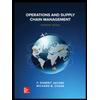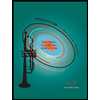A manager is attempting to put together an aggregate production plan for the coming nine months. She has obtained forecasts of aggregate demand for the planning horizon. The plan must deal with highly seasonal demand; demand is relatively high in months 3 and 4, and again in month 8, as can be seen below: The company has 20 permanent employees, each of whom can produce 10 units of output per month at a cost of $6 per unit. Inventory holding cost is $5 per unit per month, and back-order cost is $10 per unit per month. The manager is considering a plan that would involve hiring two people to start working in month 1, one on a temporary basis who would work until the end of month 5. The hiring of these two would cost $500. Beginning inventory is 0. Start with 20 permanent workers. Prepare a minimum cost plan that may use some combination of hiring ($250 per worker), subcontracting ($8 per unit, maximum of 20 units per month, must use for at least three consecutive months), and overtime ($9 per unit, maximum of 25 units per month). The ending inventory in month 9 should be zero with no back orders at the end. Compute the comprehensive cost analysis. (Hint: Use max. overtime and subcontracting in months 2–4
Critical Path Method
The critical path is the longest succession of tasks that has to be successfully completed to conclude a project entirely. The tasks involved in the sequence are called critical activities, as any task getting delayed will result in the whole project getting delayed. To determine the time duration of a project, the critical path has to be identified. The critical path method or CPM is used by project managers to evaluate the least amount of time required to finish each task with the least amount of delay.
Cost Analysis
The entire idea of cost of production or definition of production cost is applied corresponding or we can say that it is related to investment or money cost. Money cost or investment refers to any money expenditure which the firm or supplier or producer undertakes in purchasing or hiring factor of production or factor services.
Inventory Management
Inventory management is the process or system of handling all the goods that an organization owns. In simpler terms, inventory management deals with how a company orders, stores, and uses its goods.
Project Management
Project Management is all about management and optimum utilization of the resources in the best possible manner to develop the software as per the requirement of the client. Here the Project refers to the development of software to meet the end objective of the client by providing the required product or service within a specified Period of time and ensuring high quality. This can be done by managing all the available resources. In short, it can be defined as an application of knowledge, skills, tools, and techniques to meet the objective of the Project. It is the duty of a Project Manager to achieve the objective of the Project as per the specifications given by the client.
A manager is attempting to put together an aggregate production plan for the coming nine months. She has obtained
The company has 20 permanent employees, each of whom can produce 10 units of output per month at a cost of $6 per unit. Inventory holding cost is $5 per unit per month, and back-order cost is $10 per unit per month. The manager is considering a plan that would involve hiring two people to start working in month 1, one on a temporary basis who would work until the end of month 5. The hiring of these two would cost $500. Beginning inventory is 0.
Start with 20 permanent workers. Prepare a minimum cost plan that may use some combination of hiring ($250 per worker), subcontracting ($8 per unit, maximum of 20 units per month, must use for at least three consecutive months), and overtime ($9 per unit, maximum of 25 units per month). The ending inventory in month 9 should be zero with no back orders at the end.
Compute the comprehensive cost analysis. (Hint: Use max. overtime and subcontracting in months 2–4.)

Trending now
This is a popular solution!
Step by step
Solved in 5 steps with 1 images









